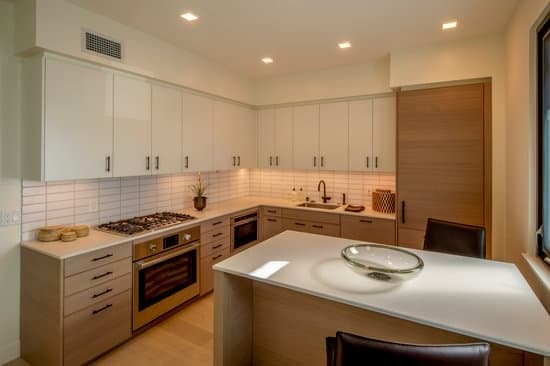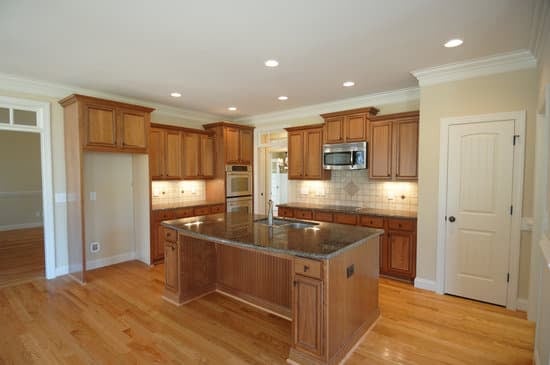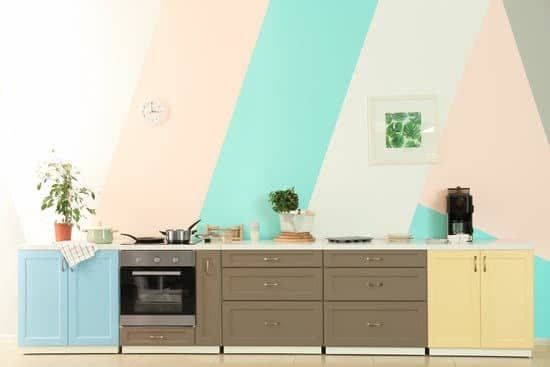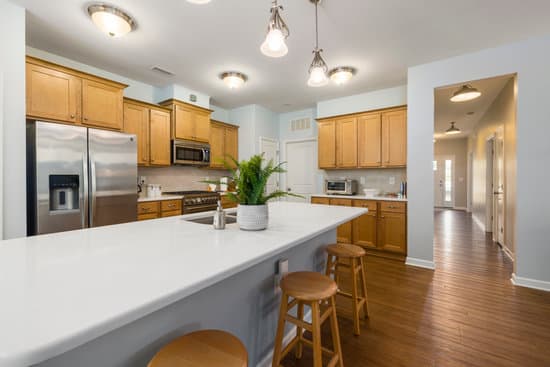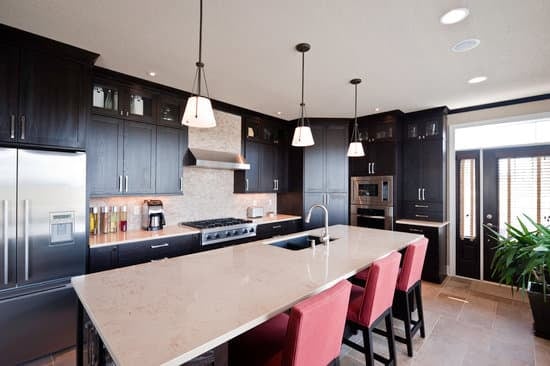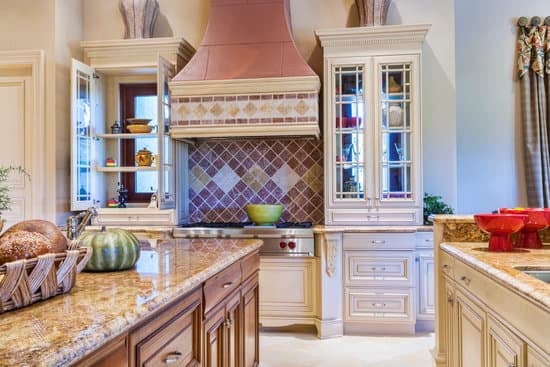Painting kitchen cabinets white is an affordable and dramatic way to refresh the look of your home. Whether you’re looking for a touch-up or a complete overhaul, knowing how much it costs to paint kitchen cabinets white can help you make the best decision for your budget and timeline. In this article, we’ll discuss some key factors that influence the cost of painting kitchen cabinets white as well as provide helpful tips on getting the job done right.
If you want to update the style of your kitchen without having to spend too much money, painting your existing cabinets white might be just what you need. Not only will it give your space a modern boost but with proper care and maintenance, it could last up to 10 years! White cabinetry can also brighten up dark kitchens while helping them appear larger in size – making it perfect if you don’t have room to expand.
No matter why you choose to paint your kitchen cabinets white, understanding all aspects of the process will ensure that it’s done properly and efficiently so that you get long-lasting results. In this article, we’ll cover everything from materials needed to estimated pricing structure so that you feel confident taking on this project yourself – or at least know what questions to ask when hiring someone else!
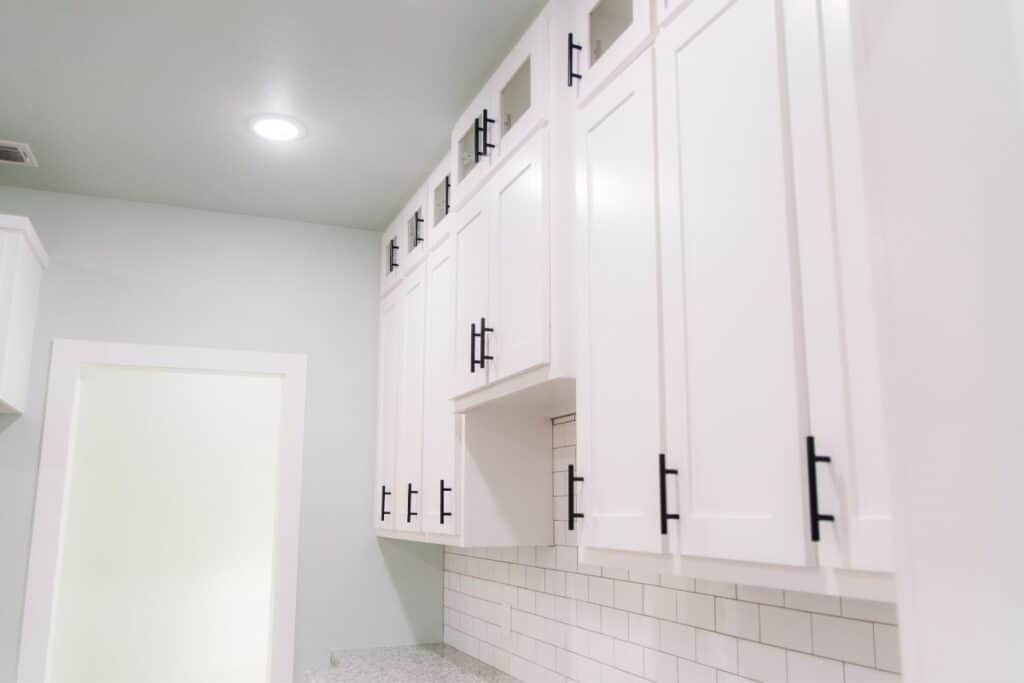
Preparing The Cabinets For Painting
Before you begin painting your kitchen cabinets, it’s important to properly prepare them. Sanding prep is the first step in preparing the surface of your cabinet for paint. A good sandpaper will help remove any old finish and make sure that the new primer adheres well. When selecting a primer be sure to select one that is specifically designed for use on wood surfaces.
Once the sanding is complete, it’s time to move onto surface preparation. This involves cleaning all areas with an appropriate cleaner as well as applying gripping tape around any handles or drawers so they don’t get painted over accidentally. After this has been done, take a damp cloth and wipe down the entire cabinet area again before beginning the priming process. By taking these steps to ensure thorough preparation of your kitchen cabinets before painting, you can guarantee a smooth and even result when finished.
Choosing The Right Paint Finish
Having prepped your kitchen cabinets, it’s now time to choose the right paint finish. There are a few options available, each with its own unique characteristics that will affect how your project turns out. Satin is a popular option as it has some sheen but not too much and is easy to clean up. Glossy finishes provide an incredibly bold look that can turn heads, while matt finishes offer a more muted aesthetic. Semi-gloss finishes give off just enough shine without being overwhelming, making them ideal for those who want something between matte and glossy. Flat paint offers little in terms of durability or washability but does have the advantage of hiding imperfections well.
Ultimately, you should select whichever type best suits your preferences and needs for the project. Consider what kind of look you want to achieve and how durable it needs to be before committing to any one type of finish. Be sure to test sample swatches on scrap wood first so you can get a better idea of what the finished product will actually look like!
Cost Of Materials And Supplies
The cost of materials and supplies needed to paint kitchen cabinets white can vary depending on the condition of the existing finish. Generally, you will need a paintbrush, roller, sandpaper, primer, and glaze. For best results, it is recommended that all surfaces be lightly sanded before applying any new paint or primer. The cost for these items should not exceed $50 in most cases.
It is also important to factor in additional costs such as brushes, rollers, tape, drop cloths and other sundries used during this project. These extra charges may add up quickly if you are completing a large-scale painting job. If hiring professional help to complete your project, labor costs could easily double the total bill. It is critical to accurately estimate both material and labor costs prior to starting an ambitious painting project like this one.
Steps To Painting Kitchen Cabinets White
Painting kitchen cabinets white is an excellent way to give your space a new look. But it can be a daunting task if you don’t know where to start. Here are the steps for painting your kitchen cabinets white:
- Prep and Clean: Before you begin, prep and clean surface areas of the cabinet doors with warm soapy water and sandpaper if necessary. This will help ensure that paint adheres properly later on.
- Prime: After cleaning, prime all surfaces using a bonding primer specifically designed for laminate or melamine surfaces. This will create more of an adhesive-like bond between the existing finish and newly applied paint.
- Sand: Once the primer has dried thoroughly, lightly sand any rough spots smooth before painting with 120 grit sandpaper or steel wool pad.
- Paint: Use high quality interior enamel in semi-gloss or satin sheen depending on desired result and apply two coats allowing each one to dry completely in between applications according to product instructions on can label.
- Finish up: Finally, add finishing touches such as hardware replacement and/or knobs and pulls installation followed by sealing the entire project with clear topcoat sealer when fully dry for added protection against dirt and grime build up over time.
The right preparation, tools, products, patience, effort, and attention to detail are essential ingredients needed to achieve success when painting kitchen cabinets white; following these steps provides you with a great starting point towards completing this job successfully!
Sanding And Priming Process
Before painting kitchen cabinets white, it’s important to go through the sanding and priming process. This will ensure that the paint adheres correctly and lasts for years to come. Sanding is essential for preparing the surface of the cabinets. It removes any imperfections or residue from previous coats of paint and creates a smooth finish. After sanding, it’s essential to prime the cabinets with a bonding primer in order to protect them from moisture damage. Primers also create an even base coat which ensures an even application of your chosen color when you start painting. Preparation is key when completing this step; make sure all surfaces are properly covered so as not to leave behind any messes.
These two steps may seem small but they play a huge role in achieving successful results when it comes to painting your kitchen cabinets white. Taking extra time here can save you money and frustration down the road as well as help preserve your newly painted cabinetry for years to come!
Applying A Base Coat Of Paint
Once the sanding and priming process is complete, it’s time to apply a base coat of paint for painting kitchen cabinets white. Before beginning this step, make sure you have all the necessary cabinet painting supplies, such as brushes and rollers that are made specifically for painting. Additionally, choose an appropriate quality of white cabinet paint; if needed, consult with a professional at your local home improvement store who can help advise which type and brand of paint would be best suited for your project.
When applying the base coat of paint to the surfaces of your kitchen cabinet doors or frames, use long strokes in one direction to ensure even coverage. Work slowly and methodically so that each section gets adequate attention. Allow enough drying time between coats; typically around 24 hours should suffice before moving onto additional layers of base coat or topcoat sealer. With patience and dedication throughout this entire process, you will end up with stunningly beautiful white painted kitchen cabinets!
Adding Final Touches With Glaze Or Wax
Once the kitchen cabinets have been painted white, you can add a finishing touch with either glaze or wax. Glazes are translucent colors that can be applied to create various looks and textures. To apply a glaze, use a brush and move it in circular motions over the entire surface of the cabinet. You should also experiment with different techniques such as sponging or ragging off to achieve unique patterns on your cabinets. When using multiple glaze colors, always remember to blend them together for a cohesive look.
Waxes come in both natural and synthetic varieties and provide an additional layer of protection against dirt and moisture while making surfaces more resistant to wear and tear. Wax is typically applied after paint has dried in order to give its attractive sheen finish. It’s important to use enough wax so that there is still some left on the surface when you wipe away the excess off with a soft cloth – this ensures proper coverage of the cabinets. With patience, practice, and attention to detail, you’ll be able to achieve beautiful results from applying either glazes or wax finishes!
Professional Vs Diy Painting
When it comes to painting your kitchen cabinets white, you have two options: professional-painting or diy-painting. Professional-painting is more expensive than DIY but may be worth the cost if you want a high quality finish that’ll last for years. On the other hand, DIY-painting can save you money but requires time and patience to do properly.
The painting process itself will depend on which option you choose. For professional-painting, there are usually several steps involved such as sanding down any existing finishes, priming the wood, then applying multiple coats of paint until the desired effect is achieved. With DIY-painting, you’ll need to do all this yourself which can take longer and require more effort. Plus, many people don’t have access to the specialized equipment needed so they often end up with less than satisfactory results.
Whether you go for a professional or DIY approach, make sure to use a good quality paint suitable for wooden surfaces and pick a durable finish that won’t scratch easily – this will help ensure your cabinet doors look great for years to come!
Hiring An Experienced Painter
Now that you understand the differences between DIY painting and hiring an experienced painter, it’s time to explore how much a professional might cost. The cost of hiring a painter will depend on several factors, such as the size of your kitchen cabinets, any additional surface preparation they’ll need to do before beginning the job, and whether or not you’ll require specialty finishes like lacquer or glaze.
The best way to get an accurate estimate is to find a reputable painter in your area who knows what they’re doing. You can ask friends and family for recommendations or search online reviews to compare prices and services offered. If possible, try to get quotes from at least three different companies so that you can make sure you’re getting the best deal. Make sure all bids include labor costs, materials needed for the project, cleanup afterward, and any necessary protective gear for their crew.
When searching for a professional painter near you, look out for signs that indicate experience with similar projects – this could be anything from pictures of past jobs on their website to positive customer feedback about their workmanship. It’s also important to check if they have valid insurance coverage in case something goes wrong during the course of the job. Taking these precautions ahead of time can save headaches down the line and ensure your satisfaction when it comes time for them to start painting your kitchen cabinets white!
Maintaining Your Painted Kitchen Cabinets
Maintaining your painted kitchen cabinets can be a simple task if you follow the right steps. To ensure that your painted cabinets remain in great condition, here’s what you should do:
- Clean Regularly – Make sure to clean your painted kitchen cabinets regularly with mild soap and water or an all-purpose cleaner. Avoid harsh chemicals as these may damage the paint finish of the cabinet doors. Dusting is also important to remove dirt from crevices and corners.
- Avoid Abrasives – When cleaning your painted kitchen cabinets, use soft cloths or sponges rather than abrasive materials like steel wool which can scratch up the surface of the door or drawer face.
- Protect From Heat & Moisture – Protect your painted kitchen cabinet surfaces from heat exposure by using pot holders when placing hot pots on them and keeping items away from stovetops, ovens, etc.. Additionally, moisture can cause staining so wipe any spills immediately and avoid setting wet dishes directly onto the cabinetry.
With regular care and maintenance, it’s easy to keep your painted kitchen cabinets looking their best for years to come!
Conclusion
Painting your kitchen cabinets white is a great way to give them an updated and fresh look. It’s important to take the necessary steps before you get started, such as choosing the right paint finish, gathering materials and supplies, and preparing for sanding and priming. While it can be tempting to try painting your own cabinets, if you’re not experienced with DIY projects like this one, then it might be best to hire a professional painter who will do a quality job in less time than it would take you. Once your cabinets are painted, maintain their beauty by regularly wiping down surfaces and avoiding harsh cleaners. Ultimately, whether you choose to DIY or go with a pro, painting kitchen cabinets white adds value to your home while giving it a modern look.

